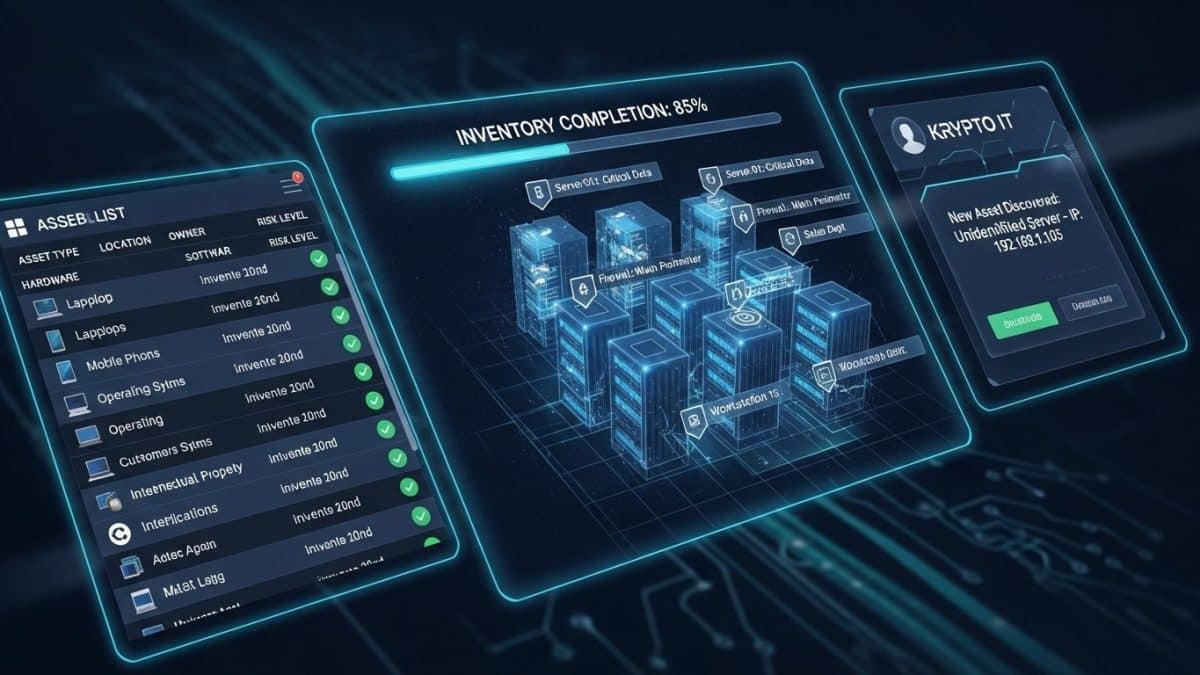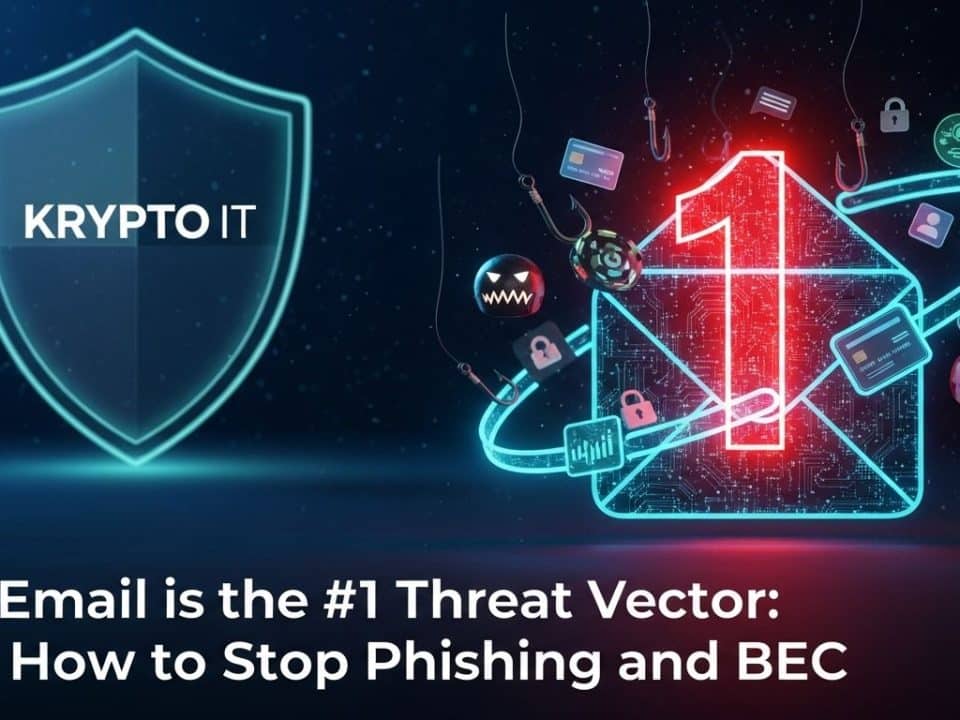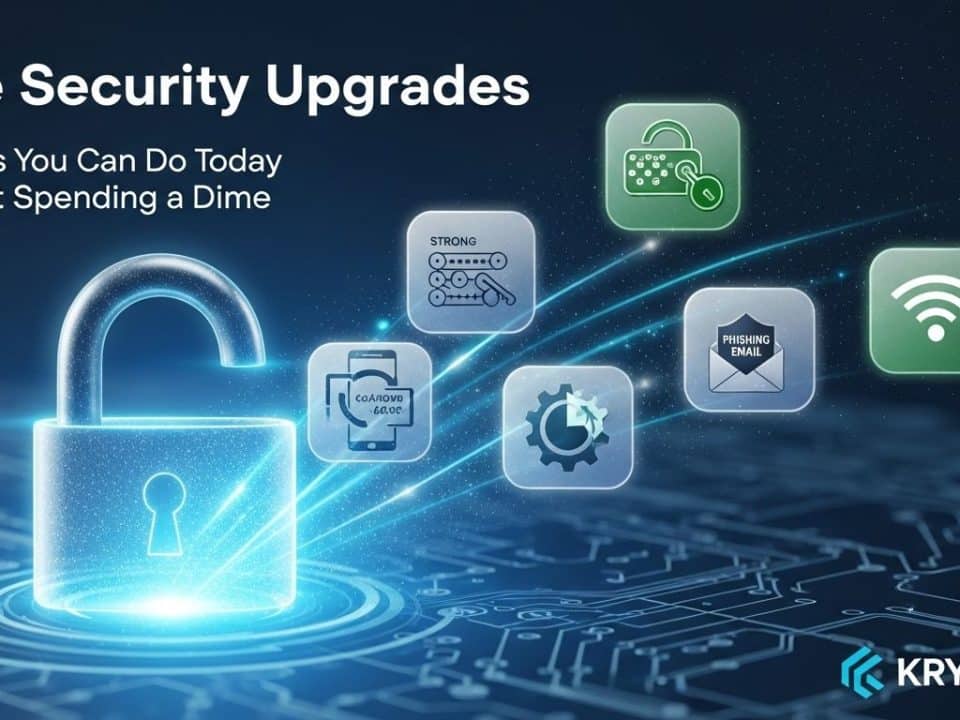
Email is the #1 Threat Vector: How to Stop Phishing and BEC
November 16, 2025By the Team at Krypto IT | Cybersecurity Experts Serving Houston SMBs
When a homeowner wants to secure their property, the first thing they do is an inventory: they list every valuable item, note the condition of every door and window, and check the expiration date on the smoke detector. They can’t protect what they don’t know they own.
In the world of small to medium-sized businesses (SMBs), the digital equivalent of this inventory—known as Asset Management or IT Inventory—is often ignored. This is a massive mistake. You cannot effectively secure, patch, or maintain compliance for an asset you don’t know exists.
At Krypto IT in Houston, we find that the failure to maintain an accurate, up-to-date IT inventory is the silent killer of security strategies. It leads to outdated software, unpatched devices, and unknown back doors that cybercriminals exploit with ease.
The Danger of the Unknown Asset
For a growing SMB, your network expands rapidly, often faster than anyone can keep track. What do you lose control over when you lack a complete inventory?
1. The Patch Management Blind Spot
Security updates (patches) are the number one defense against 85% of cyberattacks. If you don’t know a specific laptop, server, or application is on your network, you can’t patch it. That unpatched asset instantly becomes the easiest entry point for ransomware like WannaCry or NotPetya, which exploit known flaws.
2. The Shadow IT Surge
Without a baseline inventory, you have no way to detect “Shadow IT”—unsanctioned software or devices (personal laptops, unapproved cloud apps, forgotten smart printers) employees bring onto the network. These unknown assets bypass your firewall and monitoring, acting as covert gateways for hackers to access your critical data.
3. Compliance and Audit Failures
Compliance standards like HIPAA and PCI DSS require you to prove exactly where sensitive data is stored and who has access to it. If an auditor asks for a list of all devices that touch customer data, and your list is incomplete, you fail the audit. Fines often follow these failures.
4. License and Cost Overruns
An incomplete inventory means you’re often paying for software licenses (like Microsoft 365 or antivirus subscriptions) for former employees or devices that are no longer in use. While not a security risk, this unnecessarily inflates your IT budget.
5 Steps to Building Your Essential IT Inventory
An effective IT inventory doesn’t have to be overwhelming. It should be a living, managed document that tracks both hardware and software. Here is how Krypto IT approaches this foundational task:
1. Identify All Hardware Endpoints
List every physical item that connects to your network. This goes beyond employee workstations:
- Computers: Laptops, desktops, servers (including decommissioned ones).
- Networking: Routers, firewalls, network switches, and Wi-Fi access points.
- IoT: Smart printers, security cameras, smart TVs, and any non-traditional, internet-connected devices.
- Mobile: All company-issued phones and any personal devices (BYOD) accessing the corporate network.
2. Inventory All Software and Applications
List every piece of software installed across your systems, including the version number and license key. Pay special attention to:
- Operating Systems: Ensure you are tracking versions and end-of-life dates (e.g., Windows 7 is unsupported and dangerous).
- Critical Business Apps: CRM, accounting (QuickBooks), industry-specific tools.
- Cloud Subscriptions: Every SaaS application your team uses (e.g., Dropbox, Slack, Office 365).
3. Track Ownership and Access
Assign an owner to every device and every piece of software. Critically, document who has administrative access and ensure that access adheres to the Principle of Least Privilege (PoLP). This immediately addresses the Insider Threat.
4. Define the Data Classification
For each server, storage drive, or cloud folder, identify the type of data it holds: Public, Internal, or Sensitive (PII, PHI, Financial). Knowing which assets hold “sensitive” data allows you to apply the tightest security and compliance controls only where they are needed most.
5. Automate and Maintain Continuously
A spreadsheet is a good starting point, but it’s quickly outdated. The only way to truly maintain a continuous, accurate inventory is through automated tools. A professional MSP uses dedicated Asset Management Tools and Endpoint Detection and Response (EDR) systems that constantly scan the network, automatically adding new devices and flagging unauthorized software.
Krypto IT: Turning Inventory into Security
For the busy SMB owner, the inventory process is a massive headache—but it is the single greatest tool for security and compliance. You can’t start a comprehensive defense strategy (like implementing a Zero Trust model) until you know exactly what needs protection.
Krypto IT makes this foundation solid. We provide the automated tools and expertise to establish, maintain, and secure your IT inventory, ensuring every device is patched, every license is current, and every vulnerability is addressed.
Stop wasting time and resources securing the wrong things. Start with the basics.
Contact Krypto IT today for an IT Asset Inventory and Vulnerability Assessment. Let us show you what assets you have, and how we can protect them.




